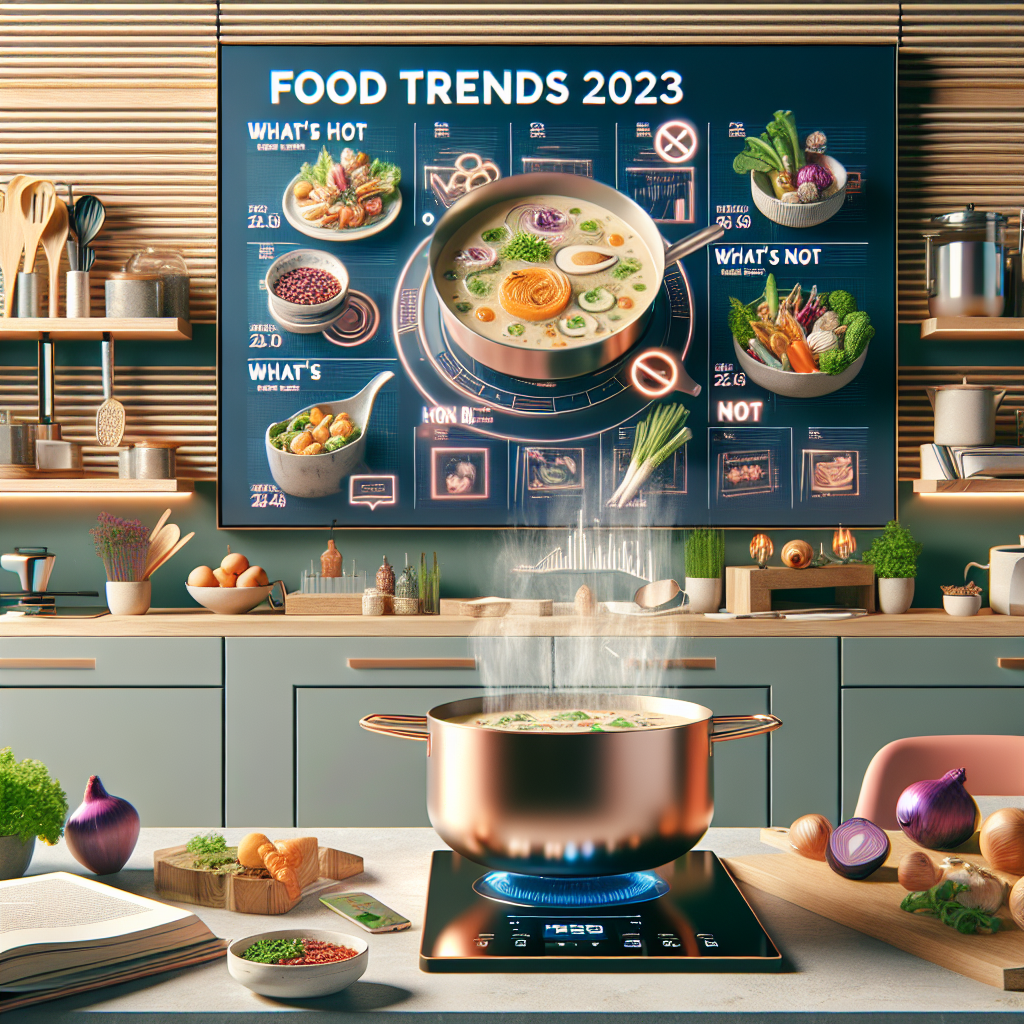As we dive deeper into 2023, the culinary landscape continues to evolve, reflecting changes in consumer preferences, lifestyle choices, and global circumstances. Food trends are often a mirror of societal values, and this year is no different. From innovative cooking techniques to eco-conscious eating habits, here’s what’s sizzling and what’s simmering down in the culinary world this year.
What’s Hot?
1. Plant-Based Innovations Aplenty
While plant-based diets have been a growing trend for several years, 2023 marks a sophisticated pivot towards innovative plant-based products. Meat substitutes are no longer limited to burgers and sausages; expect to see a variety of options including plant-based seafood, egg replacements, and dairy alternatives made from legumes and nuts. Startups and established brands alike are investing heavily in creating more palatable, protein-rich options for flexitarians and vegans.
2. Sustainable Eating
Sustainability continues to dominate food conversations. Consumers are becoming more aware of the environmental impact of their food choices and are seeking out brands and products that prioritize eco-friendly practices. From regenerative agriculture to zero waste cooking, chefs and home cooks alike are looking for ways to reduce their carbon footprint. Look out for more local sourcing, seasonally inspired menus, and fermentation techniques that utilize food scraps.
3. Global Flavors Embraced
In 2023, culinary exploration knows no boundaries. Flavors from regions previously underrepresented in mainstream cuisine are now gaining traction. Expect to see dishes infused with the spices and techniques of East African, Persian, and Filipino cuisines making their way into restaurants and home kitchens. The rise of social media has helped globalize food trends, exposing palates to diverse culinary traditions that invite experimentation and creativity.
4. Health-Conscious Comfort Foods
The pandemic has led to a resurgence of comfort foods, but with a modern twist. Consumers are seeking foods that not only comfort the soul but also nurture the body. This year we see comfort foods reimagined with healthier ingredients. Think cauliflower-based pizzas, gluten-free baking mixes, and desserts sweetened with natural sugars or alternative sweeteners. The focus is on indulgence without the guilt.
5. Tech-Infused Dining Experiences
Technology continues to merge with the culinary arts as restaurants and food brands leverage advancements to enhance customer engagement. Interactive dining experiences, augmented reality menus, and drone deliveries are becoming popular. Additionally, smart kitchen gadgets that simplify cooking and help personalize recipes based on dietary preferences are on the rise, making home cooking more accessible and enjoyable.
What’s Not?
1. Excessive Food Waste
As sustainability gains momentum, practices that lead to excessive food waste are falling out of favor. Diners are increasingly vocal about their expectations for restaurants to implement waste-reduction strategies. This has prompted a decline in portion sizes that are either too large or unnecessarily extravagant, with a greater emphasis on mindful eating.
2. Fad Diets
With nutrition information continuously evolving, 2023 sees a decline in the popularity of restrictive fad diets. Consumers are moving away from “quick fix” solutions like keto and paleo, opting instead for more holistic, balanced approaches to nutrition. The focus is shifting towards moderation, mindfulness, and a diversified diet rather than cutting entire food groups from their meals.
3. Plastic Packaging
With awareness of climate change influencing consumer behavior, single-use plastic packaging is becoming less favorable. Brands that rely heavily on plastic are facing backlash as consumers increasingly expect alternatives. Eco-friendly packaging solutions, such as compostable materials and glass containers, are being embraced as environmentally sustainable options.
4. Instagrammable Trends at the Expense of Flavor
While visually appealing dishes will always have a place in the culinary scene, this year marks a decline in the social media-driven extravaganzas that prioritize aesthetics over taste. Consumers are seeking substance over style, opting for dishes that deliver memorable flavors and experiences, rather than those that merely look good on a feed.
5. Exotic Ingredients Without Purpose
As the interest in global cuisines expands, there is a trend towards using exotic ingredients for novelty’s sake, rather than incorporating them with thoughtfulness and respect for their origins. Consumers are becoming more discerning, preferring dishes that tell a culinary story and honor tradition over those that seem gimmicky or unnecessarily complex.
Conclusion
As we navigate the evolving culinary landscape in 2023, the focus seems to be on sustainability, inclusivity, and enriching food experiences. The trends set forth this year reflect a deepening appreciation for community, health, and responsible sourcing. Whether you’re a professional chef, a home cook, or simply a food lover, embracing these trends will not only enrich your palate but also contribute to a more conscientious culinary world. Get ready to explore, enjoy, and savor the flavors that this year has to offer!














Leave feedback about this
You must be logged in to post a comment.